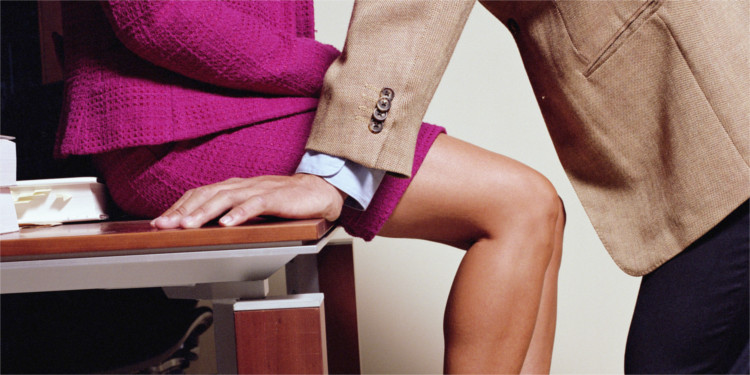No, We Are Not Where We Should Be on Workplace Equality
What used to be the exception is now the rule: women work. In fact, in today’s world, many women have become the primary wage earners in their household, either because they earn more than their spouse, as 49% of women now do, or because they are not living with a life partner. Given the way the demographics of the workplace have changed, society as a whole must have implemented equivalent changes in the way women are treated in the workplace, right?
Sadly, even though women now make up the majority of the workforce, they still face hurdles to get ahead. Women still face gender-based discrimination in pay and frustratingly high levels of sexual harassment at work. Indeed, some of the most vulnerable women are afforded few protections at all.
The Gender Pay Gap Is Alive and Well

According to a 2017 study by the United States Department of Labor, women, on average, still earn only $.79 for every dollar a man earns if they are white. If they are black, their percentage of earning drops to 61%; if Hispanic, a paltry 53%.
It is important to note that these are the adjusted wage gap percentages, meaning that it takes into account differences in hours worked, occupations chosen, education and job experience. However, when we dig into the realities behind these factors, we find we’re still left with the question of why women are continuing to earn less.
For example, in the past, the Department of Labor indicated that contributing factors to this wage disparity included women in general having lower levels of educational experience and to women as a whole contributing to a much smaller percentage in the workplace.
These factors no longer ring true in 2018, however. Indeed, in recent decades, women have far exceeded men in terms of the percentage of individuals attaining at least a bachelor’s level education. Not only are more women than men now obtaining higher education, women are more likely than men to complete their course of study. Women are more likely than men to have earned a bachelor’s degree by age 29.
Nor is it any longer true that women make up a smaller percentage of the overall work force. At 47%, the ratio of men to women in the work force is roughly even. So why does the pay gap continue to exist?

In the past, some have pointed to the fact that traditionally, women tend to gravitate toward lower paid professions such as teaching, nursing or housekeeping. However, this no longer completely explains the gap, as women are now nearly as likely as men to reach management level professions, and indeed exceed men in management in certain fields, such as human resources and higher education.
Clearly, gender discrimination continues to exist, or else the pay disparity between men and women would have reduced itself to a much smaller percentage before now. The truth of the matter is that the gap is still there primarily because old white men control massive businesses and get paid huge amounts. Those at the top are used to the old standard of doing things (see NUIG), and as a result, moving forward as women will continue to be a challenge — although the trend is definitely improving in a positive way.
Even without looking at the numbers, discrimination continues to be felt. A recent study in Northern Ireland found that 50% of women had experienced gender discrimination themselves. 30% of those women surveyed felt discrimination adversely affected their career path.
Women not only face a wage gap; gender discrimination in the workplace also impacts the course of their careers. While more and more women rise to management positions today versus in earlier years, they nevertheless face hurdles unknown to most men. When considering whether to promote a woman to a senior level management position, her employer may consider how her family duties, for example, will impact her performance, while such a question would never enter the employer’s mind when considering whether to promote a man.
#MeToo and Sexual Harassment in the Workplace

In addition to discrimination, women also face sexual harassment at levels far beyond that which men experience. According to a recent poll, 60% of women report having faced sexual harassment, and of those reporting harassment, 69% of women reported that it took place while at work.
Sexual harassment consists of unwanted sexual advances, with or without express job-related consequences being attached, or unwanted sexual jokes, stereotypes and innuendos severe and pervasive enough to create a hostile work environment.
To be clear, sexual harassment isn’t necessarily Bob in Accounting asking out Tonya in Human Resources and her declining. Many workplaces are very open nowadays to consensual office relationships as long as they are disclosed. Harassment does exist, however, should Bob continue to ask Tonya out despite her repeated refusals, or should he constantly crack jokes putting down women as inferior in general.
Workplace harassment can derail a woman’s entire career as well as an organization as a whole. Women who have experienced sexual harassment endure damage to not only their emotional well-being, but often to their physical and financial health as well. Women enduring a hostile work environment face enormous stress, leading to a lowered immune response, more frequent illnesses, and lost wages due to lost work.
Harassment also affects the economy as a whole. Harassment lawsuits cost businesses thousands of dollars annually; however, it costs them far more in terms of low morale, high employee turnover and lost productivity. Clearly addressing the issue of workplace harassment will not only lead to women being more satisfied in their work lives, but to a more productive work force as a whole.
Women in the LGBT+ Community Still Lack Basic Protections

Women who face discrimination due to their gender in the workplace at least have some protections under federal law. However, women who identify as lesbian or transgender have no such protections to guard against discrimination based upon their sexual orientation or their gender identity.
Indeed, the Trump administration has currently filed a brief in court arguing that workers have no protections from being fired due to being gay. The brief was filed in the case of Donald Zarda, a skydiving instructor who claimed he was fired because he was gay. Should Trump’s Justice Department’s assertion prevail, women who identify as lesbian would be struck a huge blow in their fight for equal rights in the workplace, and it is likely this lack of protection would extend to members of the transgender community.
With women making up half of the workforce, it’s well past time we work past the issues of gender discrimination and harassment in the workplace. This is not a women’s issue; it is a societal one. Only when all members of our society, men and women alike, are able to be their most productive free from discrimination and harassment can we move toward a more prosperous society for all.
